The fatty tissue surrounding the kidneys is important because it ________.
- is necessary as a barrier between the adrenal glands and kidneys
- ensures adequate energy for the adrenal glands to operate efficiently
- produces vitamin D and other chemicals needed by the kidney
- stabilizes the position of the kidneys by holding them in their normal position
stabilizes the position of the kidneys by holding them in their normal position
Which of the choices below is NOT a function of the urinary system?
- eliminates solid, undigested wastes and excretes carbon dioxide, water, salts, and heat
- helps maintain homeostasis by controlling the composition, volume, and pressure of blood
- maintains blood osmolarity
- regulates blood glucose levels and produces hormones
eliminates solid, undigested wastes and excretes carbon dioxide, water, salts, and heat
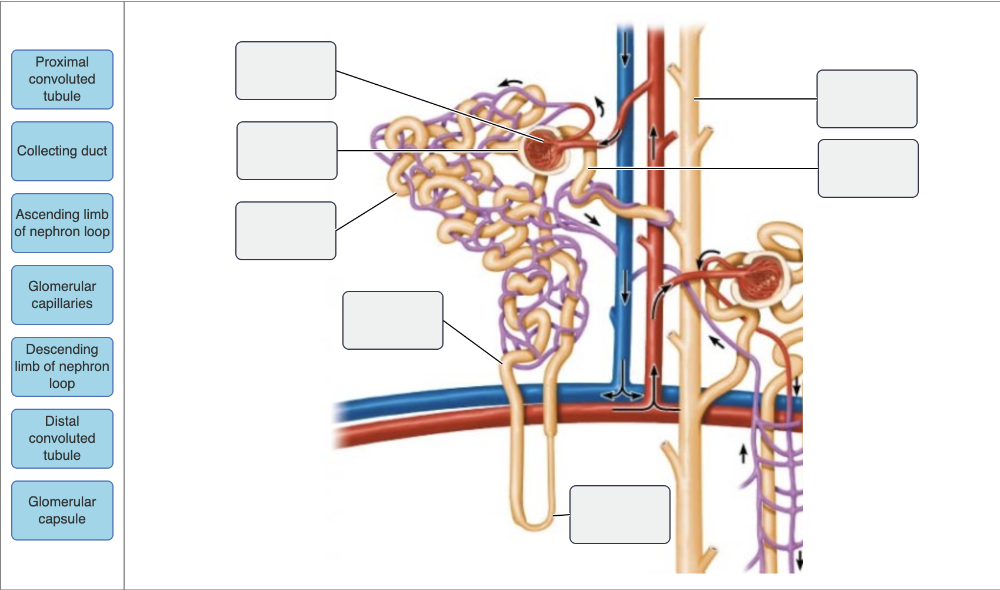
Drag the appropriate labels to their respective targets.
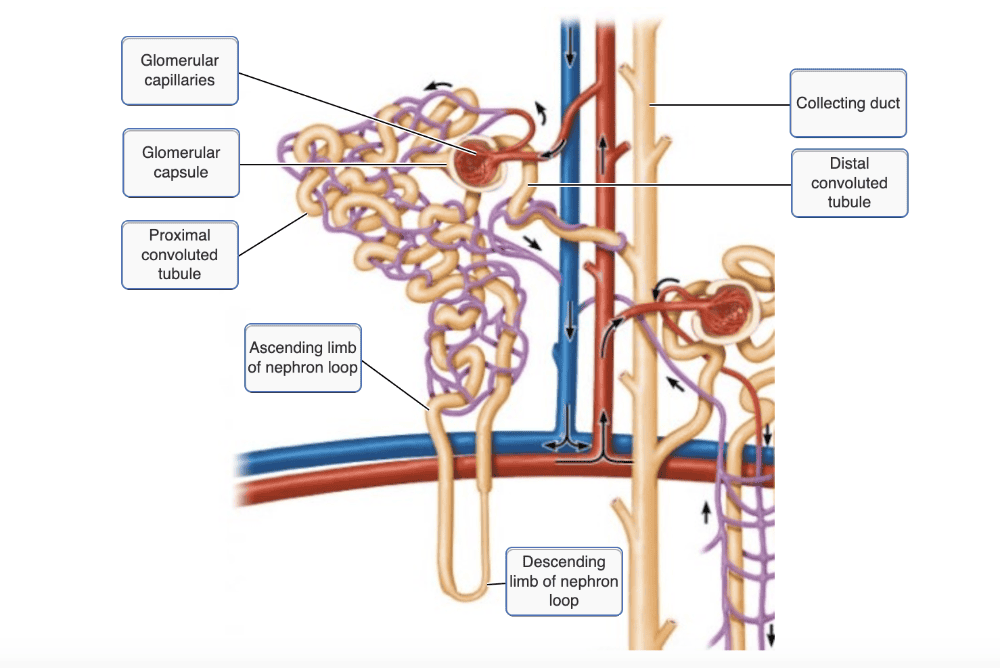
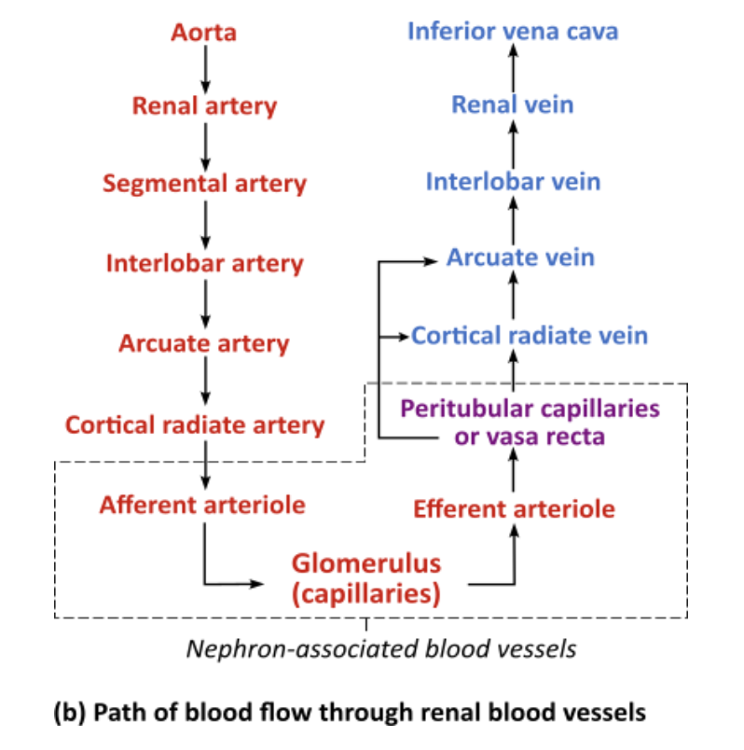
Which arteries branch off the arcuate arteries?
- cortical radiate arteries
- segmental arteries
- interlobar arteries
- renal arteries
cortical radiate arteries
Ex.
The cortical radiate arteries branch off of the arcuate arteries to carry blood to the glomeruli via the afferent arterioles.
The urethra contains an internal sphincter of smooth muscle.
- True
- False
True
Which of the following is the primary function of the juxtaglomerular complex?
- releases chemical signals that regulate the rate of filtrate formation
- reabsorption of Na+ and other ions
- concentrating urine
- a system that protects the nephron from some chemicals found in blood
releases chemical signals that regulate the rate of filtrate formation
Ex.
The macula densa cells and granular cells of the juxtaglomerular complex (JGC) release, respectively, vasoactive chemicals and renin. These chemical messengers lead to changes in vasomotor activity and Na+ reabsorption that affect the rate of filtrate formation and systemic blood pressure.
Place the following in correct sequence from the formation of a drop
of urine to its elimination from the body.
1. major calyx
2. minor calyx
3. nephron
4.
urethra
5. ureter
6. collecting duct
- 3, 6, 2, 1, 5, 4
- 3, 1, 2, 6, 5, 4
- 6, 3, 2, 1, 5, 4
- 2, 1, 3, 6, 5, 4
3, 6, 2, 1, 5, 4
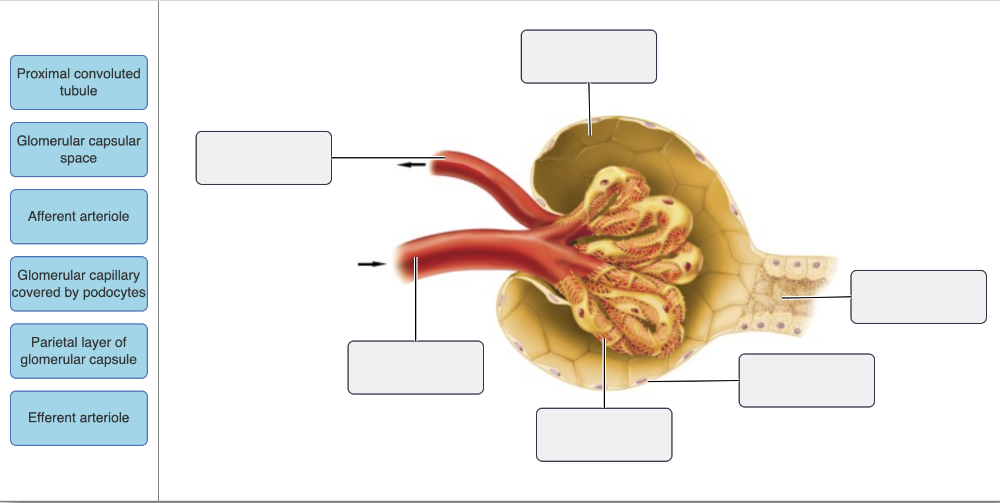
Drag the appropriate labels to their respective targets.
Label the parts of the renal corpuscle.
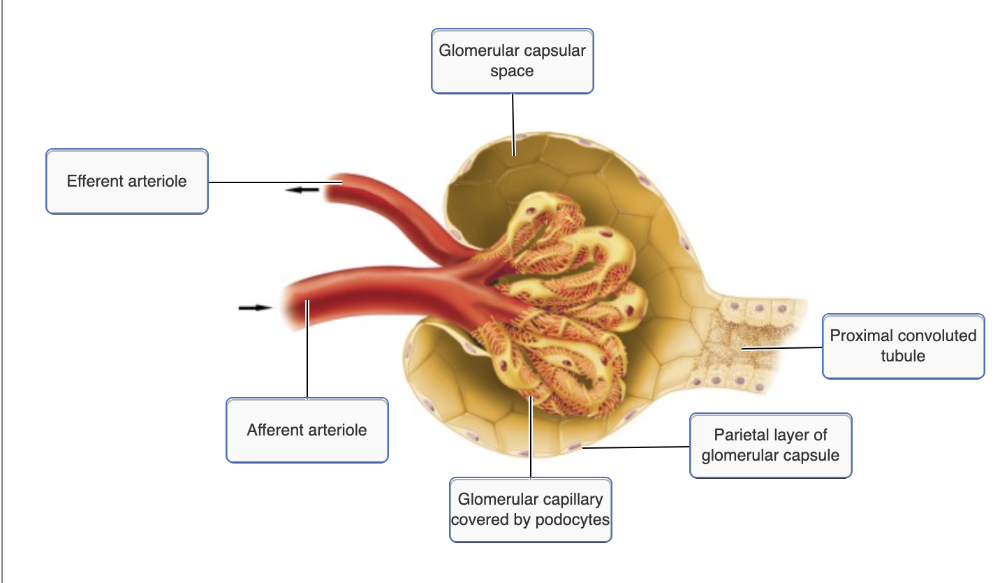
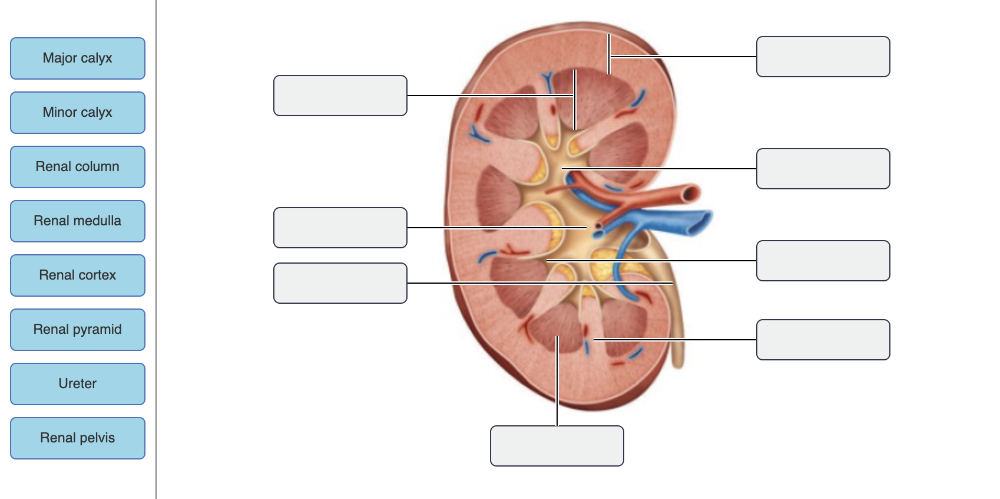
Drag the appropriate labels to their respective targets.
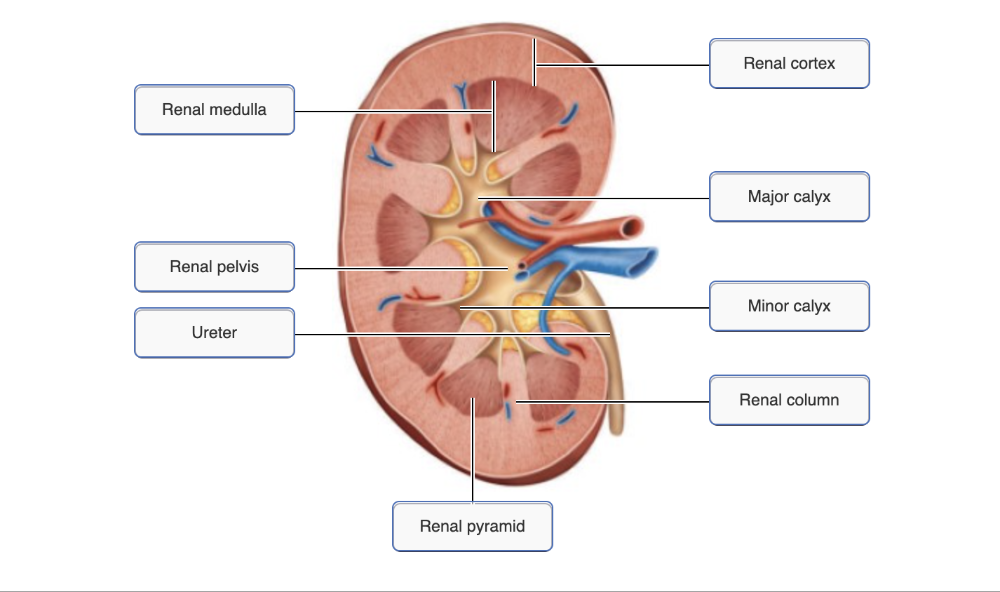
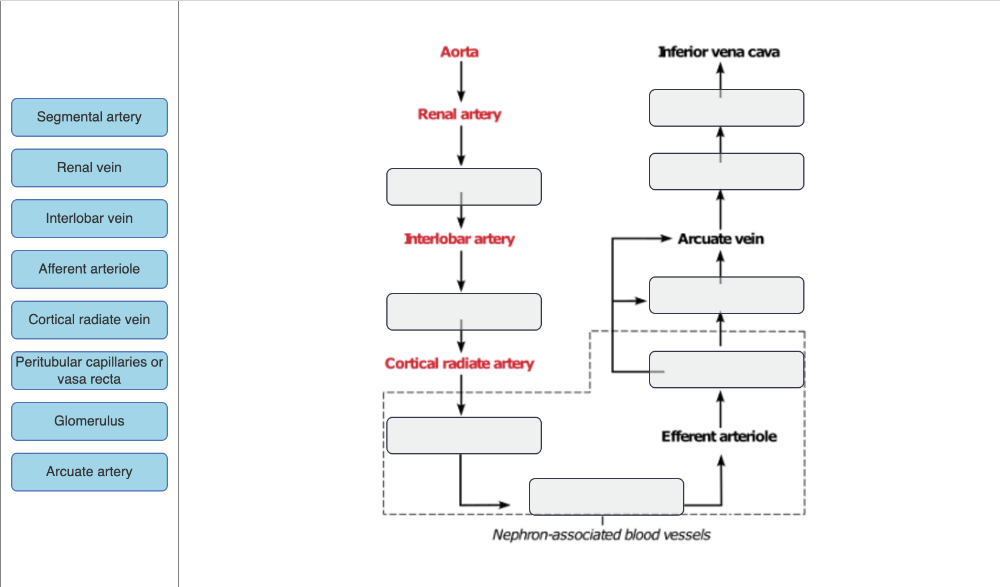
Drag the appropriate labels to their respective targets.
Label the blood vessels of the kidney.
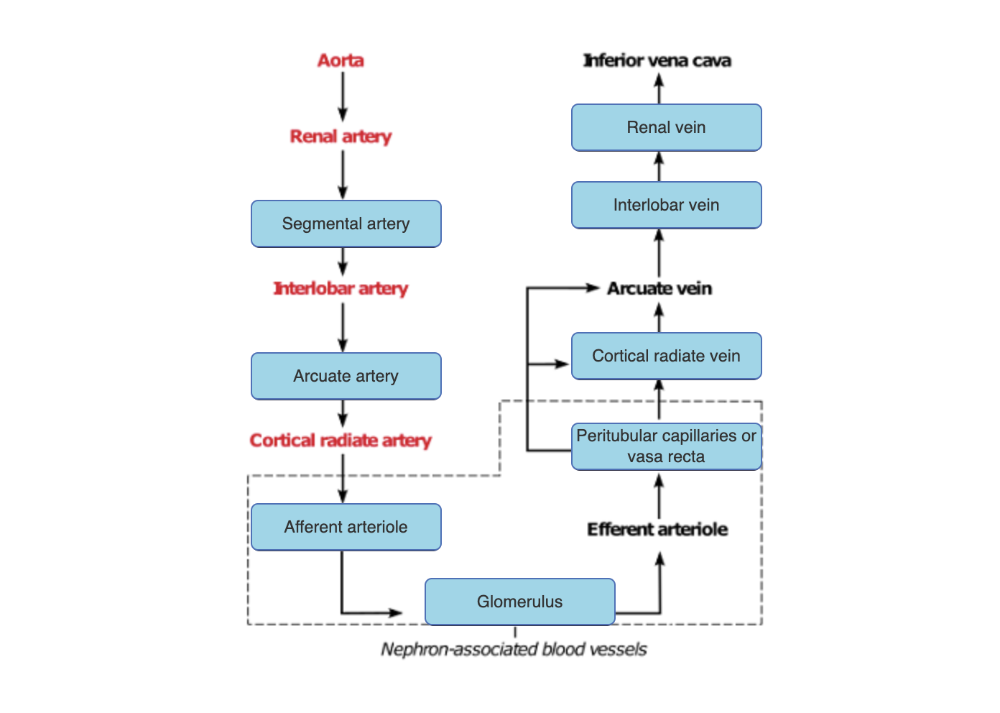
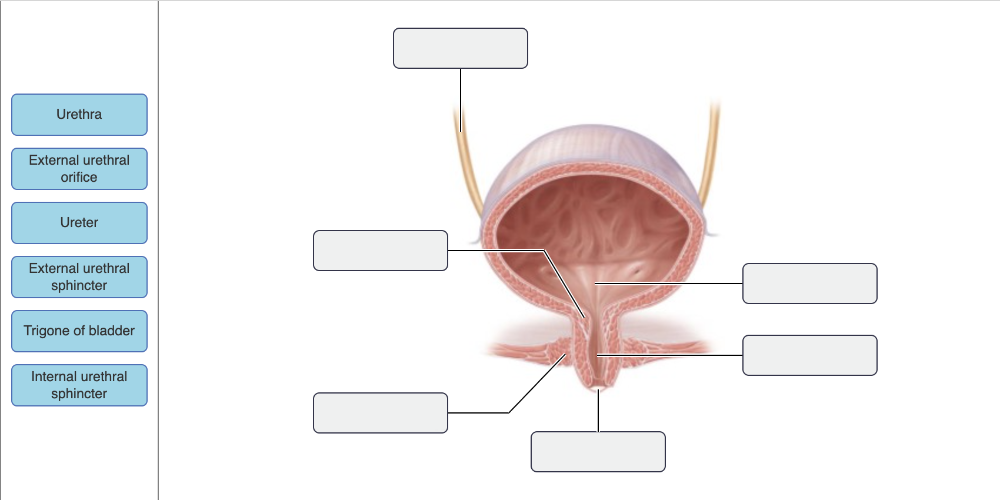
Drag the appropriate labels to their respective targets.
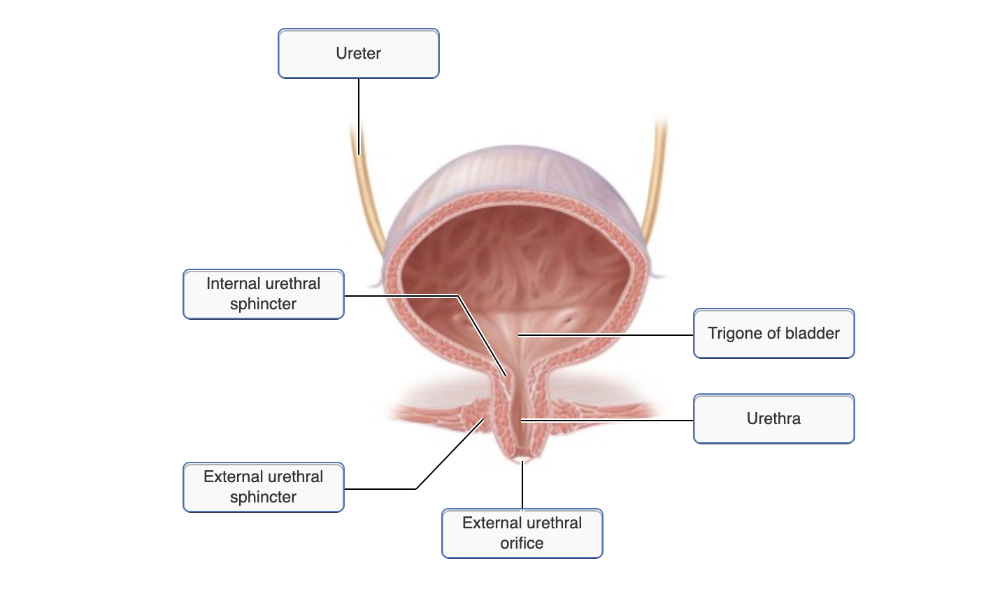
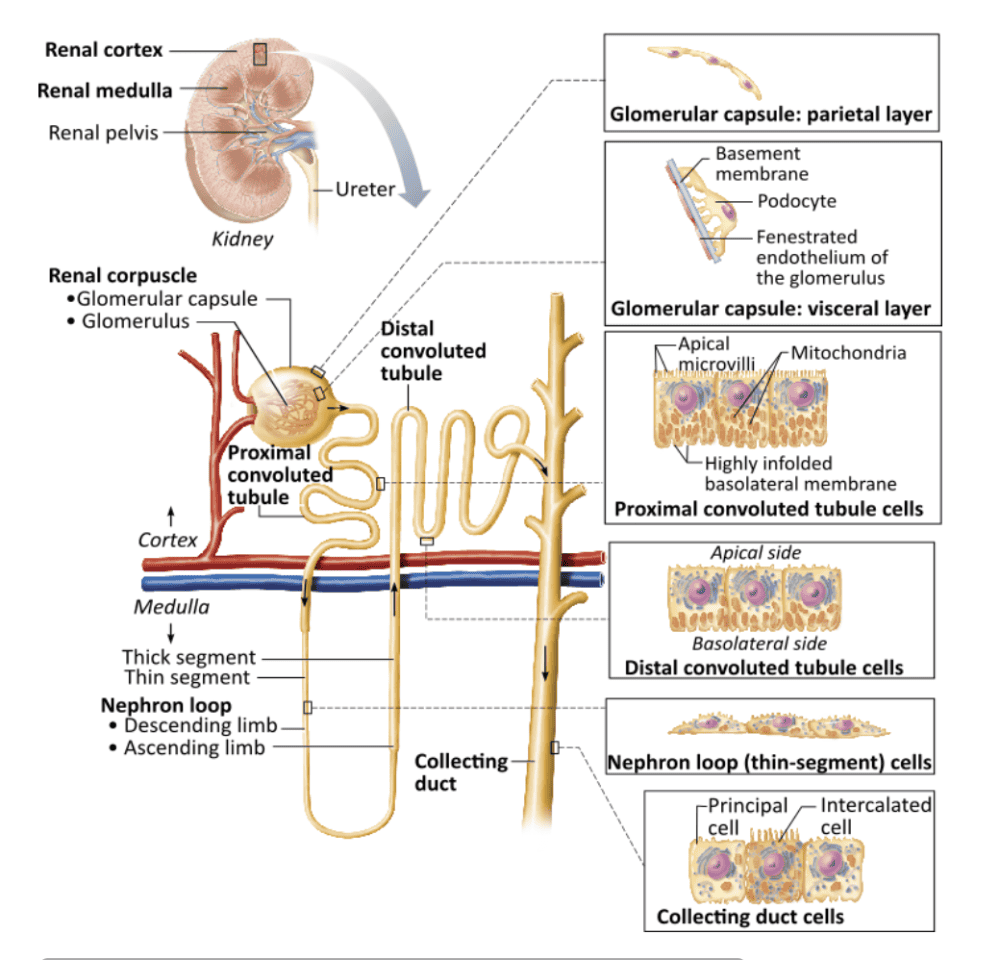
What two structures constitute the renal corpuscle?
- renal tubule and collecting duct
- proximal convoluted tubule and nephron loop
- glomerulus and renal tubule
- glomerulus and glomerular (Bowman's) capsule
glomerulus and glomerular (Bowman's) capsule
Ex.
The glomerulus and glomerular (Bowman's) capsule constitute the renal corpuscle. This is where filtrate is removed from the blood.
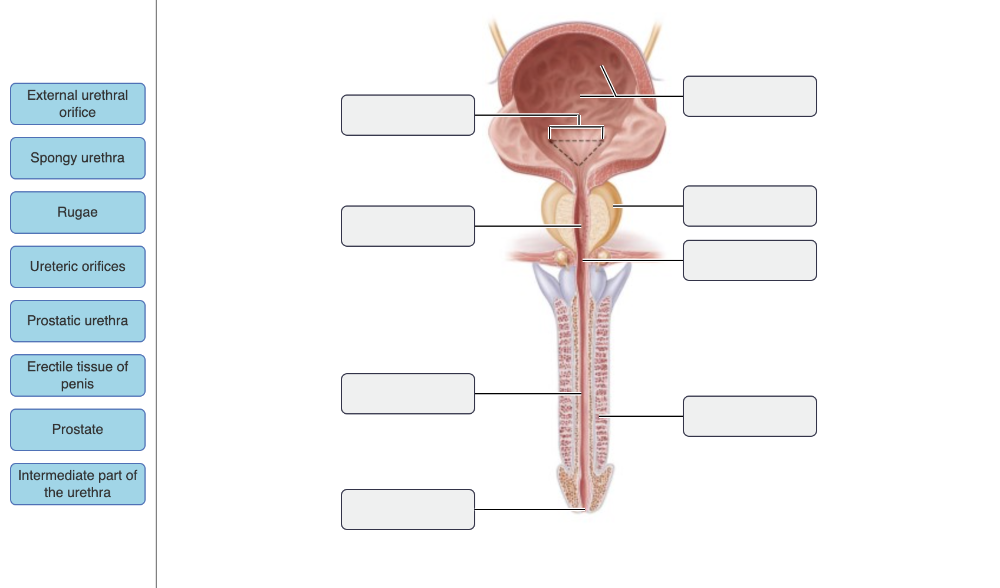
Drag the appropriate labels to their respective targets.
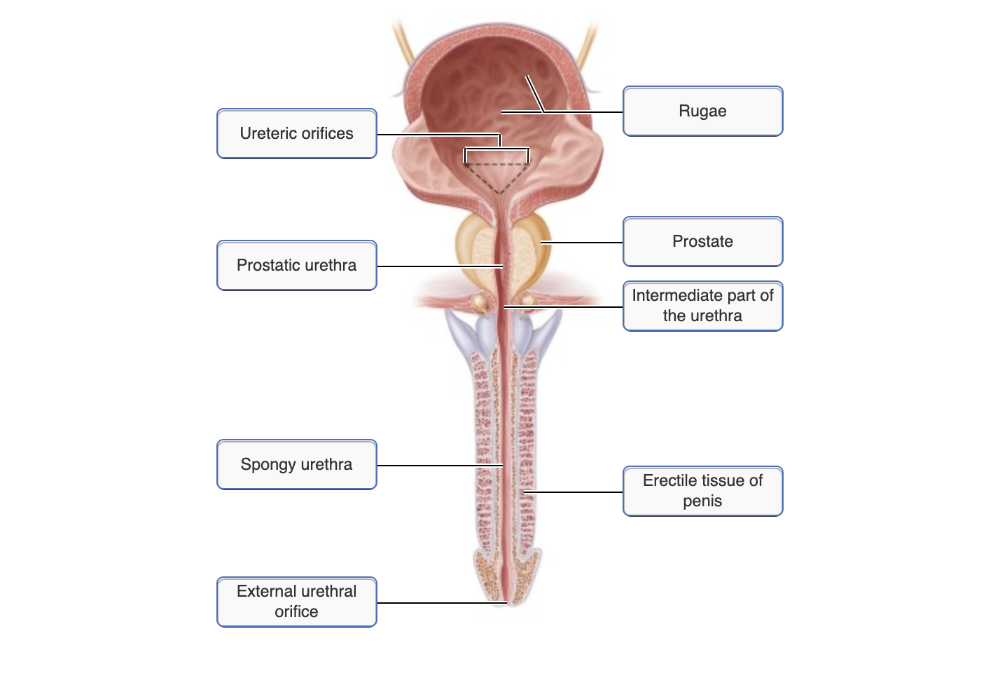
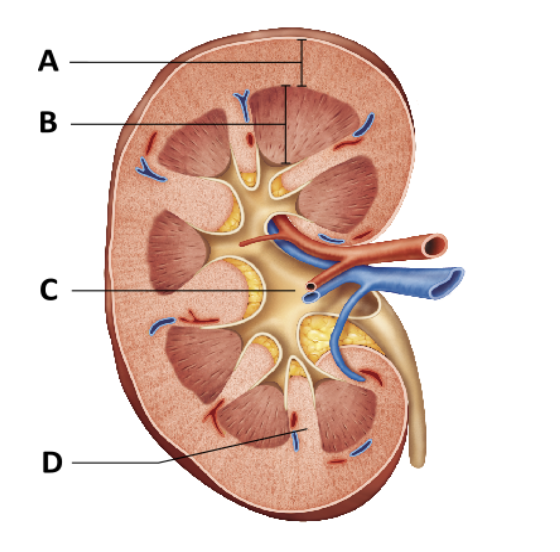
The area at C will eventually drain urine into the __________.
- nephron
- collecting ducts
- glomerulus
- ureter
ureter
Ex.
The ureter will carry the urine to the urinary bladder.

Which letter represents the region that combines several minor calyces to form two or three major calyces?
- A
- B
- C
- D
C
Ex.
The minor and major calyces collect urine and distribute it onward through the urinary tract.